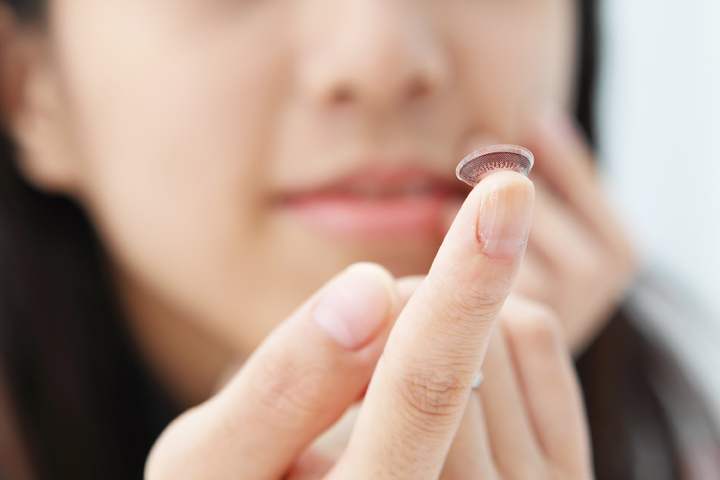5 surprising risk factors for dry eye
(BPT) – Dry eye is a progressive[1] eye disease that has been estimated to affect 7.8 percent of women aged 50 and older[2] and 4.34 percent of men aged 50 and older in the United States.[3] Symptoms include eye dryness and overall eye discomfort,[4] and may also include stinging, burning, a gritty feeling or episodes of blurred vision.[5] Although age is recognized as one of the various risk factors of dry eye,[2] other factors can increase a person’s risk for the condition, which is why greater awareness is important.
1. Computer and other video displays

Lengthy exposure to computers and other video displays has been shown to increase the risk of dry eye because continuous work in front of a video display, such as a computer screen, decreases the frequency of blinking, contributing to dryness on the surface of the eye.[6]
2. Contact lenses

As greater numbers of young people choose to use contact lenses to correct vision, the prevalence of dry eye in younger populations may become similar to what’s currently observed in older populations. For people under age 50 who use contact lenses to correct vision, rates of dry eye are similar to that of older people.[7]
3. Medications and supplements

Antihistamines, benzodiazepine and antidepressants have all been associated with dry eye in the overall population. Additionally, use of multivitamins was associated with symptoms of dry eye in those under the age of 50.[7]
4. Laser vision surgery

Symptoms of dry eye are common after most types of corrective laser vision surgery. According to a survey of nearly 800 people who had either the PRK or LASIK procedure, nearly half of these patients reported occasional eye dryness more than three months later.[8]
5. The environment

The surface of the eye is in direct contact with the environment, some elements of which may be risk factors for dry eye. Dry and warm climates, in particular, are known to be more damaging to the eyes than wet and cool climates[9] and even indoor office environments have been shown to result in symptoms of dry eye, brought on by air conditioning and the upward gaze of the eyes while working on computers.[10]
For more information about dry eye, and the signs and symptoms, talk to your eye care professional.
[1] Stern ME, Gao J, Siemasko KF, Beuerman RW, Pflugfelder SC. The Role of the lacrimal functional unit in the pathophysiology of dry eye. Experimental Eye Research. 2004; 78: 409-416.
[2] Schaumberg DA, Sullivan DA, Buring JE et al. Prevalence of dry eye syndrome among US women. Am J Ophthalmol. 2003 Aug;136(2):318-26.
[3] Schaumberg DA, Dana R, Buring JE et al. Prevalence of dry eye disease among US men: estimates from the Physicians’ Health Studies. Arch Ophthalmol. 2009 Jun;127(6):763-8
[4] The definition and classification of dry eye disease: report of the Definition and Classification Subcommittee of the International Dry Eye WorkShop (2007). Ocul Surf. 2007 Apr;5(2):75-92.
[5] Facts About Dry Eye. The National Eye Institute. Available at: https://www.nei.nih.gov/health/dryeye/dryeye. Accessed May 29, 2015 – ‘What are the symptoms of dry eye?’
[6] Yazici A, Sari ES, Sahin G, Kilic A, Cakmak H, Ayar O, Ermis SS. Change in tear film characteristics in visual display terminal users. Eur J Ophthalmol. 2015 Mar-Apr;25(2):85-9.
[7] Paulsen AJ, Cruickshanks KJ, Fischer ME, Huang GH, Klein BE, Klein R, Dalton DS. Dry eye in the beaver dam offspring study: prevalence, risk factors, and health-related quality of life. Am J Ophthalmol. 2014 Apr; 157(4):799-806.
[8] Hovanesian JA, Shah SS, et al. Symptoms of dry eye and recurrent erosion syndrome after refractive surgery. J Cataract Refract Surg 2001;27:577-84
[9] Paschides CA, Stefaniotou M, Papageorgiou J, Skourtis P, Psilas K. Ocular surface and environmental changes. Acta Ophthalmol Scand. 1998 Feb;76(1):74-7.
[10] Wolkoff P, Nøjgaard JK, Troiano P, Piccoli B. Eye complaints in the office environment: precorneal tear film integrity influenced by eye blinking efficiency. Occup Environ Med. 2005 Jan;62(1):4-12.
This content is provided by Shire.


